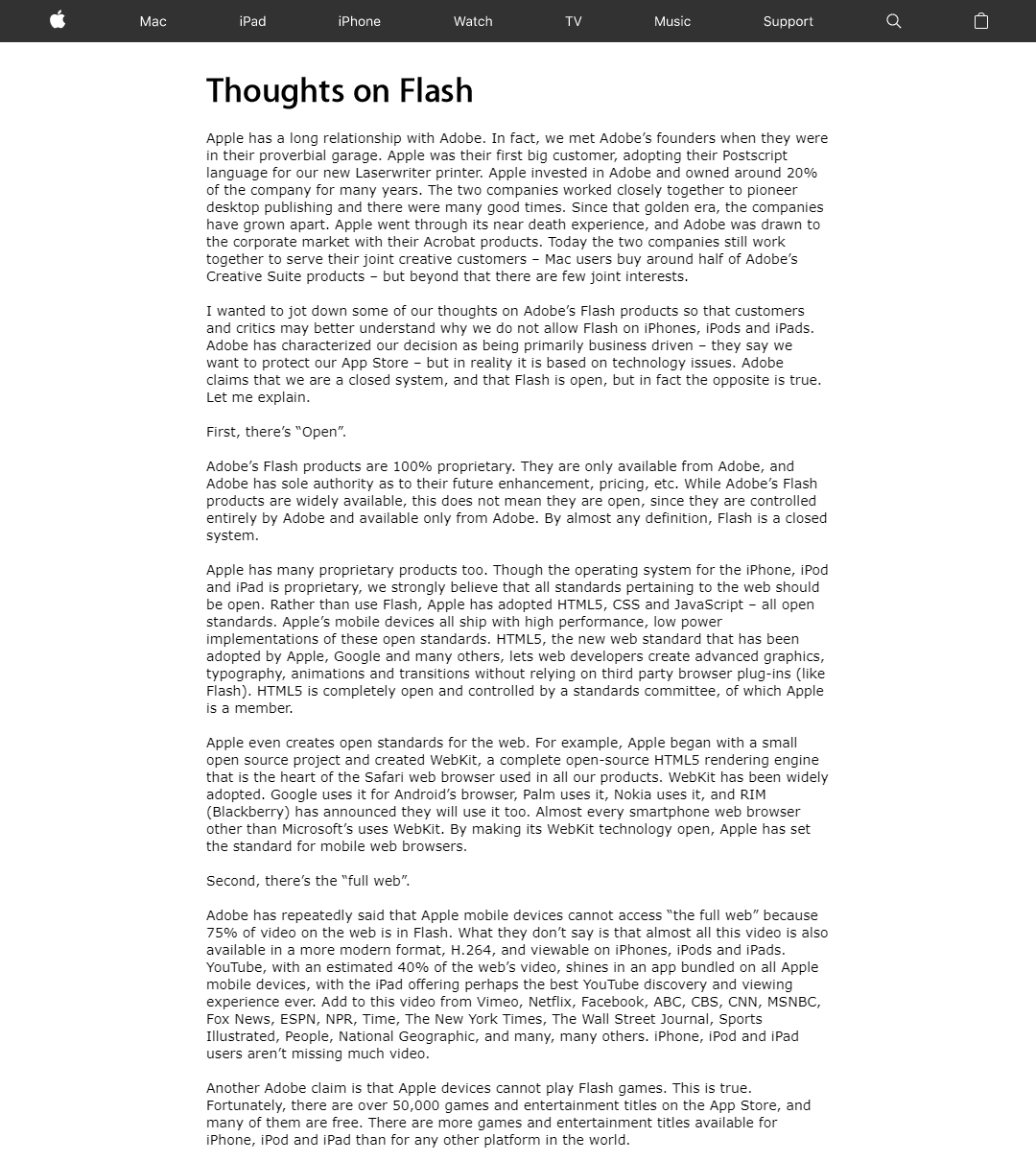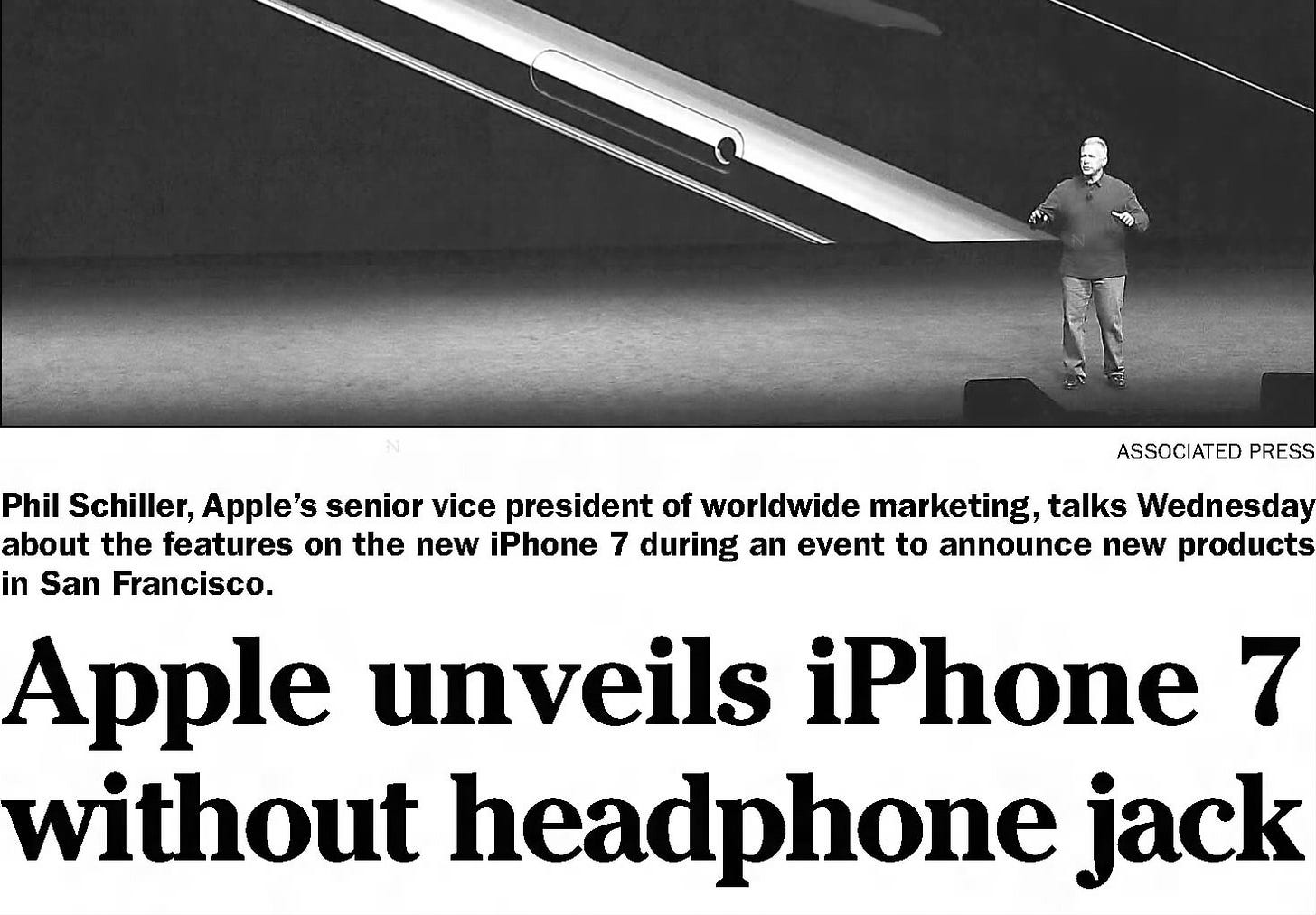Thinking Different is Never Popular (at First)
Apple’s iconic motto, “Think Different,” perfectly captures the company’s essence and why we admire it. Yet it’s often forgotten how much criticism Apple initially receives when it challenges conventional wisdom. As Steve Jobs remarked in 2010: “When we get rid of things like the floppy disk drive on the original iMac, people call us crazy.”
He was right. Here’s a quick overview:
Macintosh: Command Lines (1984)
A computer without a command line was heresy in the 1980s - a graphical user interface (GUI) featuring pictures and icons was considered childish and unserious. One study suggested it was distracting for students…
iMac: Floppy Disk Drives (1998)
A computer without a floppy disk drive was considered unthinkable. Critics mocked Apple's decision to replace the universal floppy with CD-ROM and USB ports, arguing it would isolate users and render the colorful new iMac impractical for everyday computing.
iPhone: Physical Keyboard (2007)
A smartphone without a physical keyboard was widely ridiculed as impractical, particularly by business users accustomed to tactile BlackBerry-style keyboards. Typing on a screen was thought to be slow, error-prone, and uncomfortable - because it was - Apple overcame these issues with an auto-correct system that made it feel effortless and easy.
Microsoft CEO Steve Balmer would infamously quip in reaction to iPhone:
“…it doesn't appeal to business customers because it doesn't have a keyboard. Which makes it not a very good email machine."
Macbook Air: CD Drive (2008)
The Macbook Air was the thinest laptop Apple ever made, and it was only possible by removing a once standard feature in laptops: a CD drive.
A laptop without a CD drive was labeled obscene. Critics argued that removing optical drives would render the MacBook Air little more than an overpriced, overly thin status symbol, doomed to fail in a market reliant on physical media.
Apple offered a USB optical drive sold separately, leading to accusations they were trying to sell something to customers that once came standard.
iPad: Adobe Flash (2010)
A tablet without Adobe Flash had many write off the iPad as useless and unable to compete with laptops as a portable computing device. So fierce was the criticism that Steve Jobs penned an open letter ‘Thoughts on Flash’ noting that alternatives like HTML 5 was the future.
Macbook: USB ports (2015/2016)
Just as people had gotten used to a Macbook without a CD drive, Apple removed the USB-port in its new 12-inch Macbook and then Macbook Pro’s leading to uproar. Like floppy and CD drives, USB was now standard part of our digital lives.
Apple also removed HDMI and SD cart slots on Macbook Pros - something it would later bring back.
iPhone 7: Headphone Jack (2016)
The most recent controversy was Apple removing the 3.5mm headphone jack - an almost century old standard - this really pissed people off because it was an open standard, unlike Apple’s lightening ports.
In the same announcement Apple revealed Airpods - leading people to think this was a way to force users to go wireless. Phil Schiller, Apple’s head of marketing predicted the backlash, preempting questions about the decision with an infamous line:
“It really comes down to one word: courage. The courage to move on, do something new, that betters all of us.”
Whatever you think of this heterodox design decision, it’s hard to argue Schiller didn’t have a point in the macro.












Interesting. I worked at Microsoft as a UX Designer a few years before the IPhone was released. They were working on a new mobile phone interface with a physical keyboard. I suggested that they could make the screen much bigger if they used an in-screen keyboard.
The usability testers said (and I quote): “We tested that and the users hated it.”
No, they tested a poor implementation of a digital keyboard and users hated it. When customers got their hands on a good implementation, they loved it.
I was at the introduction of the Macintosh at the Boston Computer Society, sitting right behind Woz. Jobs pulled the cover off the Macintosh, and it spelled Hello on the screen in script. The audience melted. In the Q&A, a critic ranted about how Apple could possibly ship a 3 1/2" plastic cased floppy disk instead of the "industry standard" 5 1/2" disk. Jobs pulled the securely packaged floppy out of the Mac and flung it into the audience like a Frisbee. His answer: "That's why!"